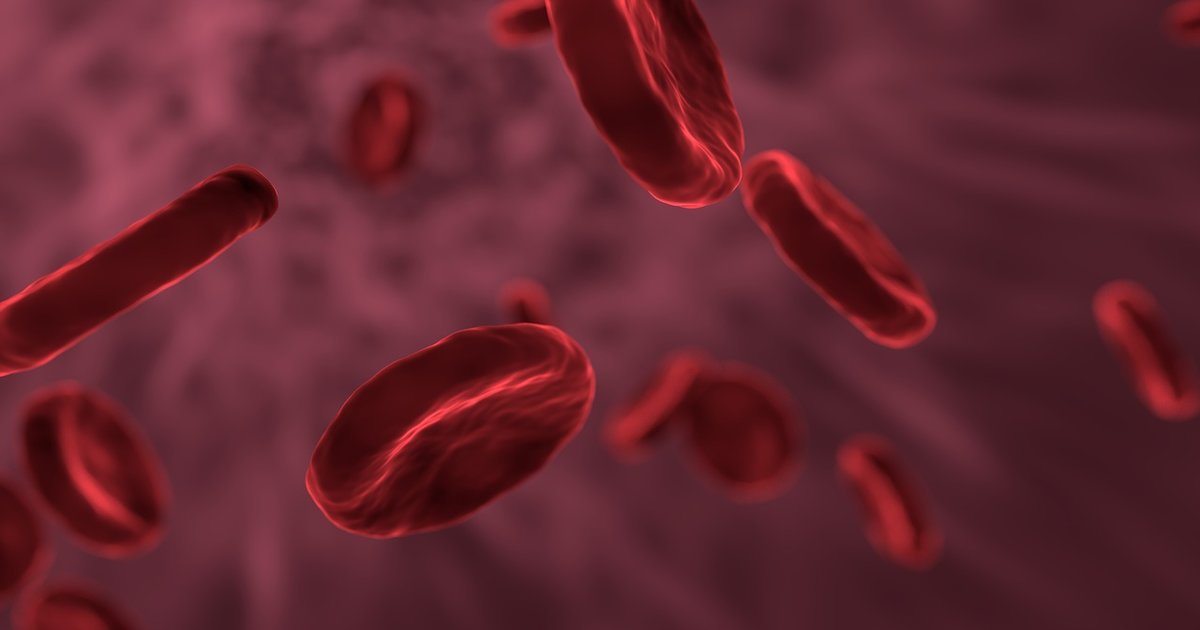Author: Lisa Hyde-Barrett

Alarming, Yet Uplifting Information in PBS Cancer Documentary
History has taught us many lessons. Studying the past can help us progress, and can prevent us from repeating mistakes. Recently on PBS, there was an excellent history and status report on cancer: ‘Cancer: The Emperor of All Maladies,’ written by oncologist Siddhartha Mukherjee and produced by Ken Burns. Mukherjee’s reasons for writing the book was because he was confused on where we are now versus where we have been in the treatment of cancer. How could we talk about the future, if we don’t know the past?
Cancer has been recognized as a disease for centuries. Part of that time it was thought that nothing could be done to treat it, and there was no cure for it. Cancer was thought of as a disease with “too much humors,” balance of the body was out of synch.
During this three-part documentary, many fascinating ideas were explored, and future directions were explained in a way that could be understood by all of us. The fact that more people will die from cancer in the next two years than from all the wars that have ever been fought, is a sobering reality.
The numbers alone are staggering:
- 1.7 million Americans are diagnosed with cancer each year;
- 1 in 2 men will have cancer in their lifetime;
- 1 in 3 women will have cancer in their lifetime;
- 600 thousand people die a year from cancer.
Although the numbers are frightening, the documentary was uplifting. To see where we have been, and how far we have come in cancer care today is amazing. To gain more insight into cancer and the progress being made, visit the PBS website to find out where you can watch the series.
Know more about Mesothelioma and how you can deal with it.

Patients Often Deal With Blood Clots
Blood clots are one side effect mesothelioma patients must deal with. Patients with cancers that occur in the lungs and abdomen, such as mesothelioma, are at greater risk of developing blood clots. Although cancers that have spread from their original site, or metastasized, can put patients at risk too. Often physicians look at age, race and ethnicity to determine risk factors, but treatments including surgery, chemotherapy and radiation are all contributing factors. The good news is that blood clots can be treated.
A blood clot can also be called a thromboembolism. There several different types that may develop in cancer patients. One type is a venous thromboembolism that develops in a vein. A deep vein thrombus, or a DVT, usually occurs in the leg, thigh or pelvis; whereas, a pulmonary embolism is a blood clot that has traveled to the lung from another area, and can be life-threatening. Thirty eight percent of patients who have had surgery will be diagnosed with a blood clot, but they are treatable.
Blood clot symptoms include pain, swelling and redness in the affected area. Usually these are seen in the calf, leg or thigh. The symptoms of pulmonary embolism are shortness of breath, chest pain, and rapid breathing and heartbeat. Sometimes the person will also cough up blood. If you experience any of these conditions, you need to notify emergency personnel immediately.
Patients who have pulmonary embolisms are usually treated with Heparin for 5-10 days and then are converted to an oral medication. Depending on your treatment, doctors may order a non-invasive ultrasound of your legs, pelvis, arms and neck. It is easy and painless- a warm gel is applied to the affected area, and the ultrasound handle is placed on the area being scanned. Attached to the device is a monitor that will show your vessels and will reveal if there is a clot in one of your extremities or pelvis. If your physician is suspicious that you may have a pulmonary embolus, you will have a CT scan that specifically looks for a clot in your lungs.
Anticoagulants are the drugs that help break up these clots and stop other clots from forming. Compression stockings can also be used (they are a type of support hose). If you are receiving inpatient care, you may receive therapy to get you walking to keep the blood circulating as much as possible. Often times people have pneumatic boots on that help promote circulation while in bed. This is a small machine that has plastic leggings that squeeze your legs intermittently. It is painless, and most patients don’t mind them.
This may all sound overwhelming, but I want to cover information about issues you may have to manage as a mesothelioma patient. Always keep your medical team informed of any pain or symptoms that suddenly appear.
If you have any questions about any aspect of your mesothelioma care, please email me at [email protected].
Nurse Inspired by Mesothelioma Survivor Who Comforts Other Patients
Survivors of mesothelioma and their stories are inspirational. From their stories we gather strength and renewed purpose. At a recent conference, a mesothelioma survivor talked about her journey, her leap of faith, and her life today, as well as the everyday challenges she now faces living with mesothelioma. She looked and sounded fabulous.
I watched her speak with and comfort a family member of another mesothelioma patient. Their story was not as positive, but she was powerful with the words that she shared. She left a lasting impression on those that attended the conference. Her road has been filled with challenges, serious issues, and adjustments that she and her family had to make, but she delivered her message with grace, dignity, and gratefulness.
As she spoke, one thing that struck me was her inhalation of breath, it was part of her life now with one lung. She spoke with truth about her life before mesothelioma, the diagnosis, the fear and her journey. She blindly put her faith in a surgeon almost ten years ago, when the medical world knew so much less about mesothelioma. She said she had no choice, but her treatment center gave her hope. I am sure it must be difficult to know whether the option you pick is the right choice. Clearly, this woman made the right choice for her.
As part of her legacy, as a young, long term survivor of mesothelioma, she always has her hand extended to help others. When she speaks with someone, she never really speaks about her situation. Instead she listens intently, and she puts her feelings and her journey aside while she puts herself in their shoes.
As a professional nurse, I find it amazing to see these patients think about somebody else when their lives have been turned upside down. She spoke about how community is so important and how that helped her and her family recover.
We all consider her cancer free, but she is still in the nucleus of the mesothelioma community continually giving back. Possibly, that is part of the recipe of a long term survivor.
If you have any questions about any aspect of your mesothelioma care, please email me at [email protected].

Cultivating the Next Generation of Mesothelioma Researchers
The study of mesothelioma is led by passionate scientists, doctors, researchers and advocates who have dedicated their lives to making progress leading to a cure. Once a year, at the annual Mesothelioma Applied Research Foundation conference, they get re-charged by meeting the victims and their families and by putting faces to the patients and families struggling with mesothelioma.
How does the next generation of researchers find out about mesothelioma and become impassioned to study towards a cure? There are several initiatives that are aimed at college students to gain the opportunity to learn and study about mesothelioma.
One is through the Jan Egerton and Don Smitley Mesothelioma Scholarship open to all U.S. college students, sponsored by MesotheliomaHelp. The scholarship is designed to spread awareness of mesothelioma, by having college students research and write about mesothelioma and the dangers of asbestos. Increasing awareness of the facts regarding mesothelioma, also increases the number of young people who become knowledgeable about the history of the disease. Spreading the word to a younger generation, and encouraging them to get involved with the mesothelioma community, expands the community in a very positive direction.
Another initiative is a fellowship by the International Association of Heat and Frost Insulators Union, named for their General President, The “James A. “Jim” Grogan Endowed Fund for Excellence” at Notre Dame University. Three students from Notre Dame, will be funded as a student intern in asbestos-related medical research, focusing on early detection, effective treatment and cure of asbestos diseases including mesothelioma and lung cancer. The start of their fellowship is attendance at the Mesothelioma Applied Research Foundation International Symposium on Malignant Mesothelioma. Hearing patients’ journeys firsthand gives the students a very personal perspective before they head to the lab.
As a new generation is learning and researching towards a cure – and the current researchers continue to make groundbreaking discoveries – we hope and pray, that together they will be successful in their research!
Know more about Mesothelioma and how you can deal with it.
Nurse Suggests Ways Mesothelioma Patients Can Manage Insomnia
Before starting chemotherapy for cancer patients, nurses take the time to explain all the possible side effects to the patients. However, what the patients hear and their own expectations of how they are going to handle the treatments, are sometimes at odds. Chemotherapy for mesothelioma patients involves some side effects, like neuropathy, that not all patients experience, but a significant number do.
While talking with a patient who had recently started chemotherapy for breast cancer, I discovered that she had some interesting points that I had not really considered about cancer treatments in general. Her major complaint was that the side effects of the chemotherapy – losing her hair, nausea, exhaustion – had all been explained, and she thought she knew what to expect. What she didn’t anticipate was her inability to plan and get things done, and that was really bothering her. She had planned to keep working through the chemotherapy, but she was disappointed that she needed to take more time off than she originally thought. She was experiencing insomnia, a problem that she had never had before.
Difficulty with insomnia, the inability to fall and stay asleep, is reported in 30% to 50% of all cancer patients, according to one study. Other studies say the rate might be as high as 75% of all cancer patients. The circadian rhythms are disturbed during cancer treatments. This is the internal biological clock located in the brain that helps regulate our body’s normal rhythms, including temperature, and hormone levels to maintain the natural sleep- wake cycle, during the 24 hour day. There is also some research that shows that circadian rhythm disruptions may even contribute to cancer itself.
What can help with insomnia?
- Relaxation exercises before bed, such as breathing, guided imagery, meditation, and relaxing your mind and body.
- Lifestyle changes like watching what and when you eat and drink might help. Limiting caffeine intake after a certain hour.
- Exercising and being more active also may help.
Are you anxious or depressed? These emotions are real and important to recognize. Cancer has upset your world and your family’s. Are you sleeping and napping in the day because you are tired or because you are depressed? Let your care team know about this problem. There are medications that might help. Don’t let this go- you need your strength to fight cancer and to give the chemotherapy a chance to work. There is treatment for insomnia- reach out.
If you have questions about any aspect of your mesothelioma care, please email me at [email protected].
Free Mesothelioma Patient & Treatment Guide
We’d like to offer you our in-depth guide, “A Patient’s Guide to Mesothelioma,” absolutely free of charge.
It contains a wealth of information and resources to help you better understand the condition, choose (and afford) appropriate treatment, and exercise your legal right to compensation.
Download Now